Off the southern coast of Finland lies the island of Mölandet. Its proximity to Finland’s capital Helsinki makes it a popular location for Finns looking to escape the city in summer. But on its southern tip, surrounded by sturdy pine trees and reddish granite cliffs, is an unexpected, hidden gem: a moss garden created by the Finnish landscape architect Tom Simons.
Although Tom considers it one of his most important gardens, and has drawn on a range of sources from early landscape paintings to the great gardens of Europe and Japan for inspiration, he is quick to point out that he hasn’t designed this garden as such; rather, he has tried to create the best possible conditions for mosses to flourish in this distinctive, wild space. So subtle have been his interventions that you only realise it is a garden when you look very carefully.
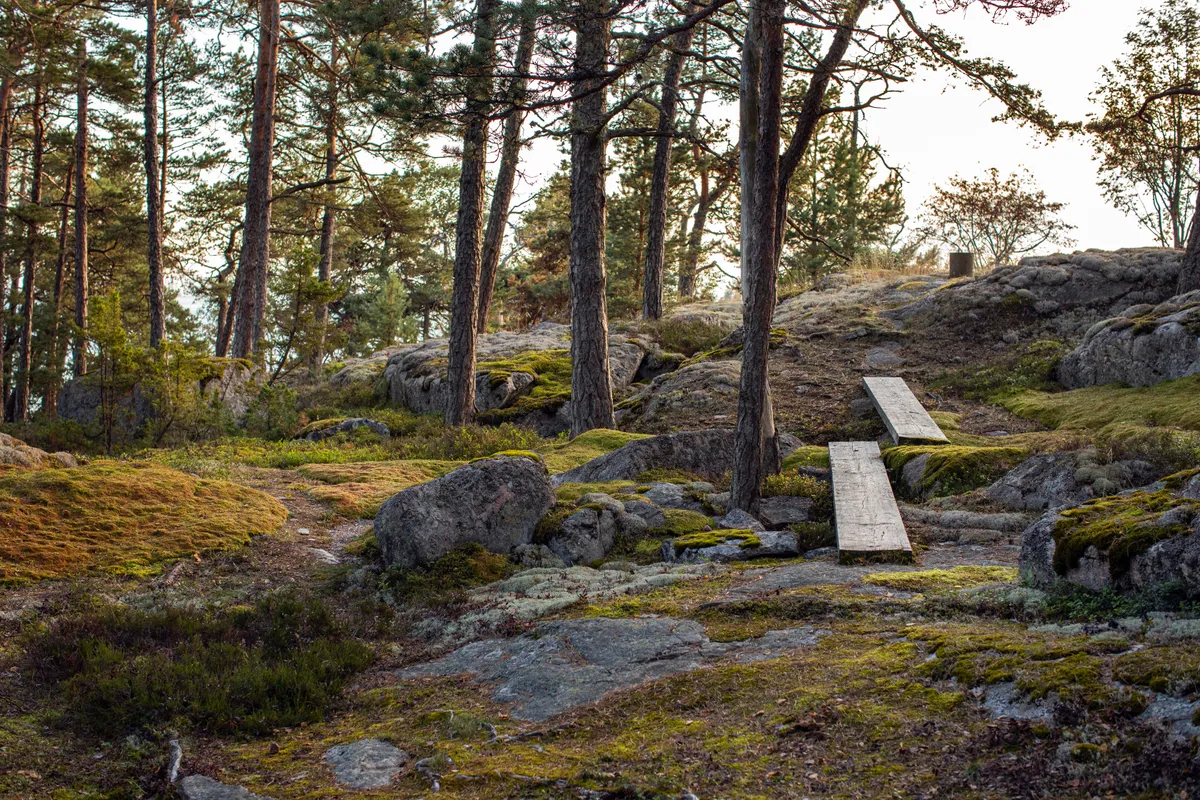
On entering the garden you experience a distinct feeling of calm and stillness, but also a tingle of anticipation like being at the theatre when the lights go down. Then as your senses sharpen, you notice how the light keeps changing, and you begin to hear the birds chirping and the gentle sound of waves lapping the shore. You see how some of the mosses form small, puffy cushions, while others create large, rolling carpets.
Read on for more from Tom's moss garden.

Leucobryum glaucum, an important species in Japanese moss gardens, grows best in shade.

Tom’s moss garden sits at the foot of a moss- and lichen-covered slope, which Tom has likened to a glacier due to its flowing character. The garden is accessed by a bridge made from two Japanese-inspired, broad planks.

The lichen- and moss-covered rocks accentuate the topography of the foreground, while the guardian stone highlights the vertical axis. It is in part a nod to the 17th-century French landscape architect André Le Nôtre who used similar techniques to create views.
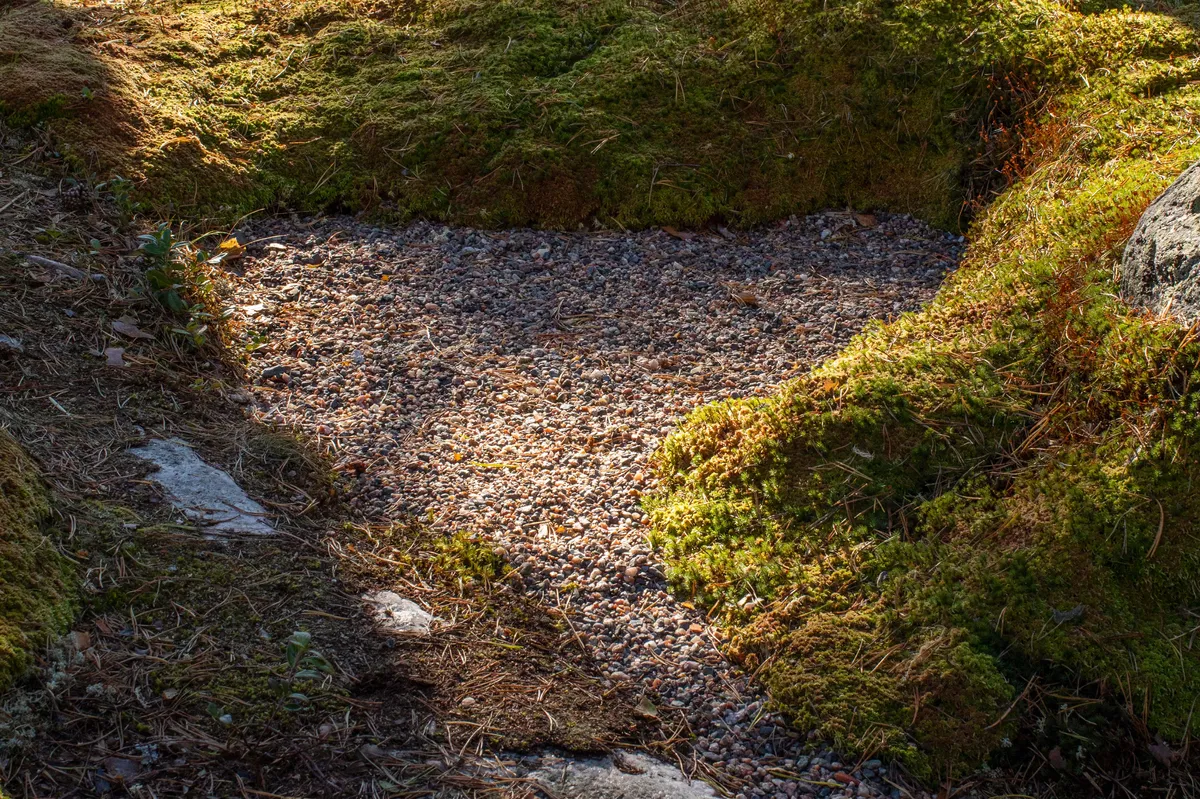
Nestling under the sloping rock face that conjures up a glacier is Tom’s small, dry garden, which represents the pool of water that might have formed from the glacier’s melting ice.
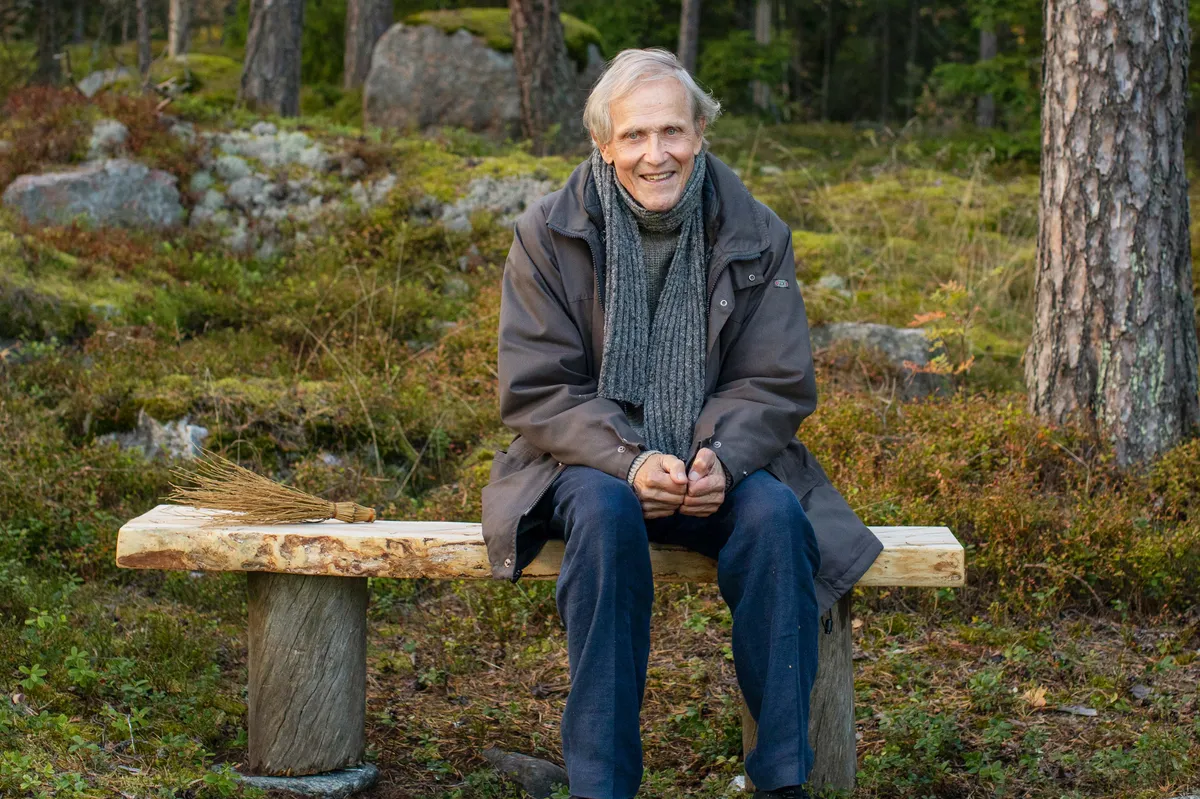
Tom Simons on the bench he built from Mölandet birch. He believes that landscape architects have a duty to reveal the features of nature and landscape in their work. The bench is the perfect place from which to admire the soothing topographic forms of the moss garden and the borrowed landscape beyond.

Tom’s installation, Dance Macabre, highlights the fragility of nature and was inspired by a 15th-century drawing by the German artist Michael Wolgemut.
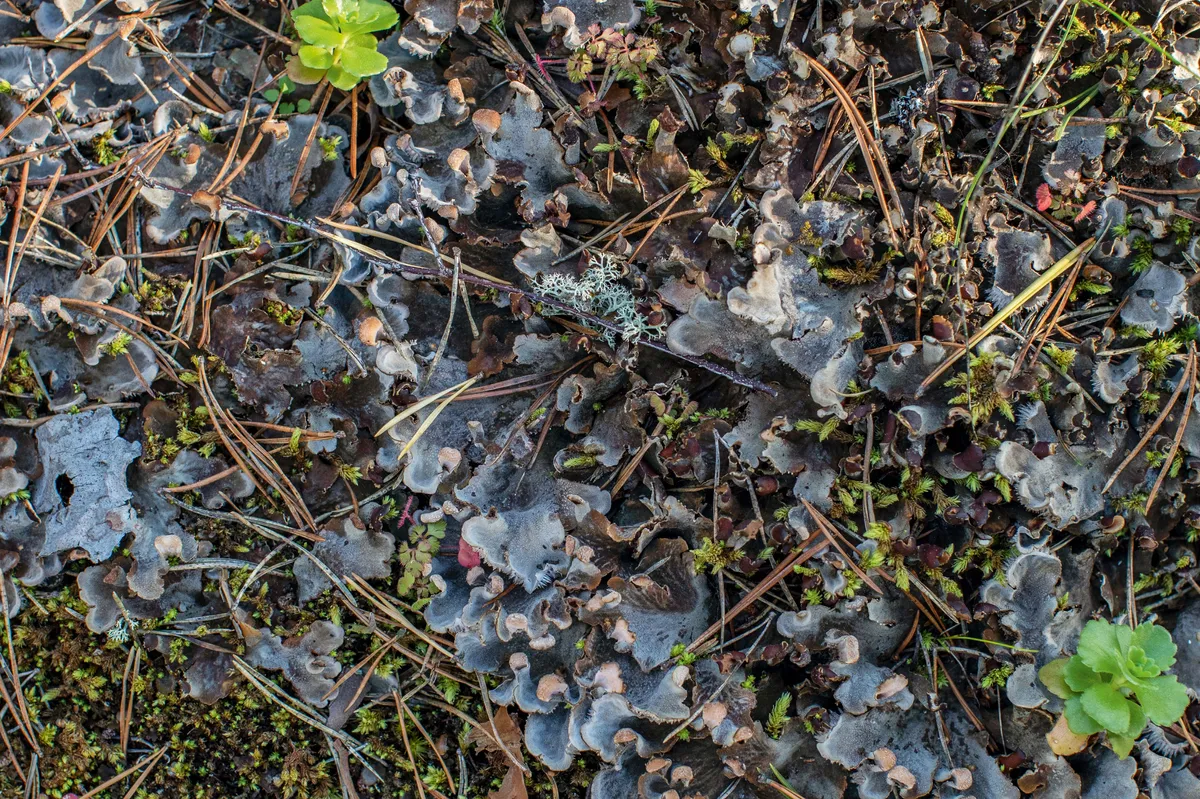
The lichen Peltigera rufescens forms a small carpet around the guardian stone. It was a pleasant surprise to Tom when it appeared, having established itself after he poured chalk on the soil to encourage sedum to grow.
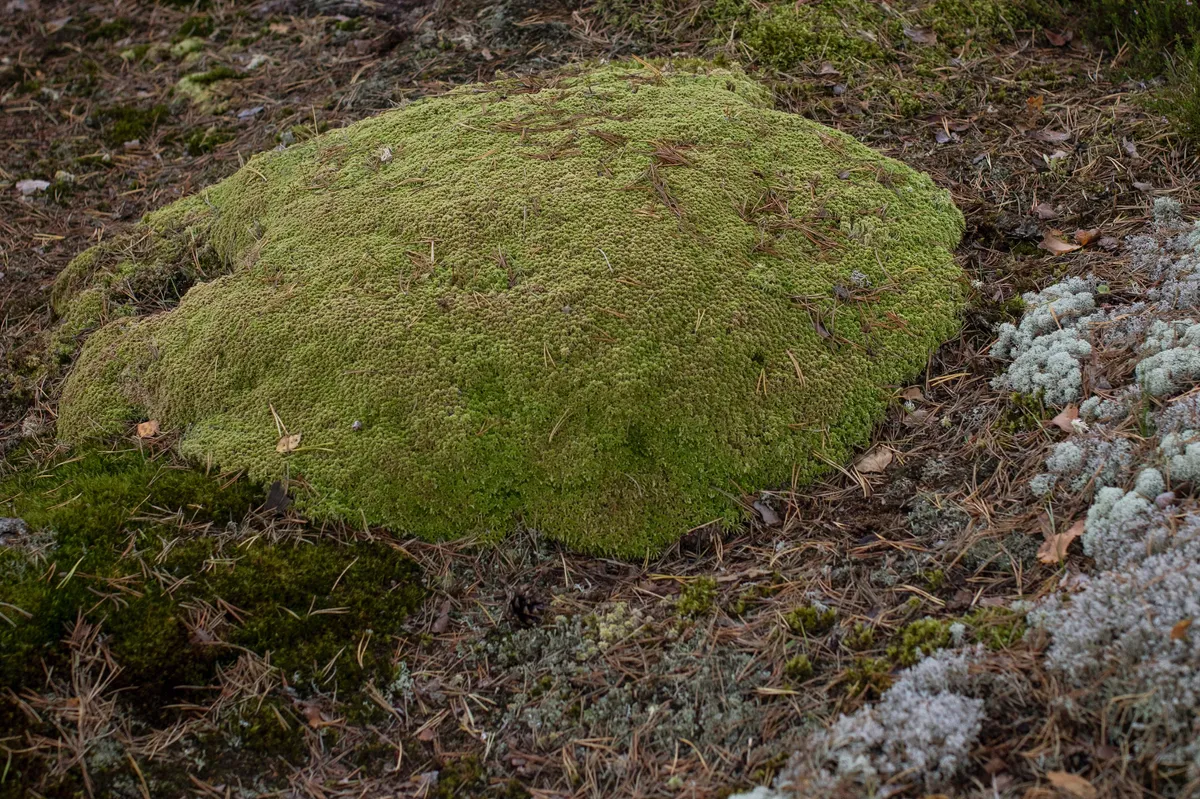
The small to medium-sized peat moss Sphagnum capillifolium forms dense, green carpets or hummocks. Keeping the tussocks and surrounding areas clean and free of debris are important tasks in the garden.
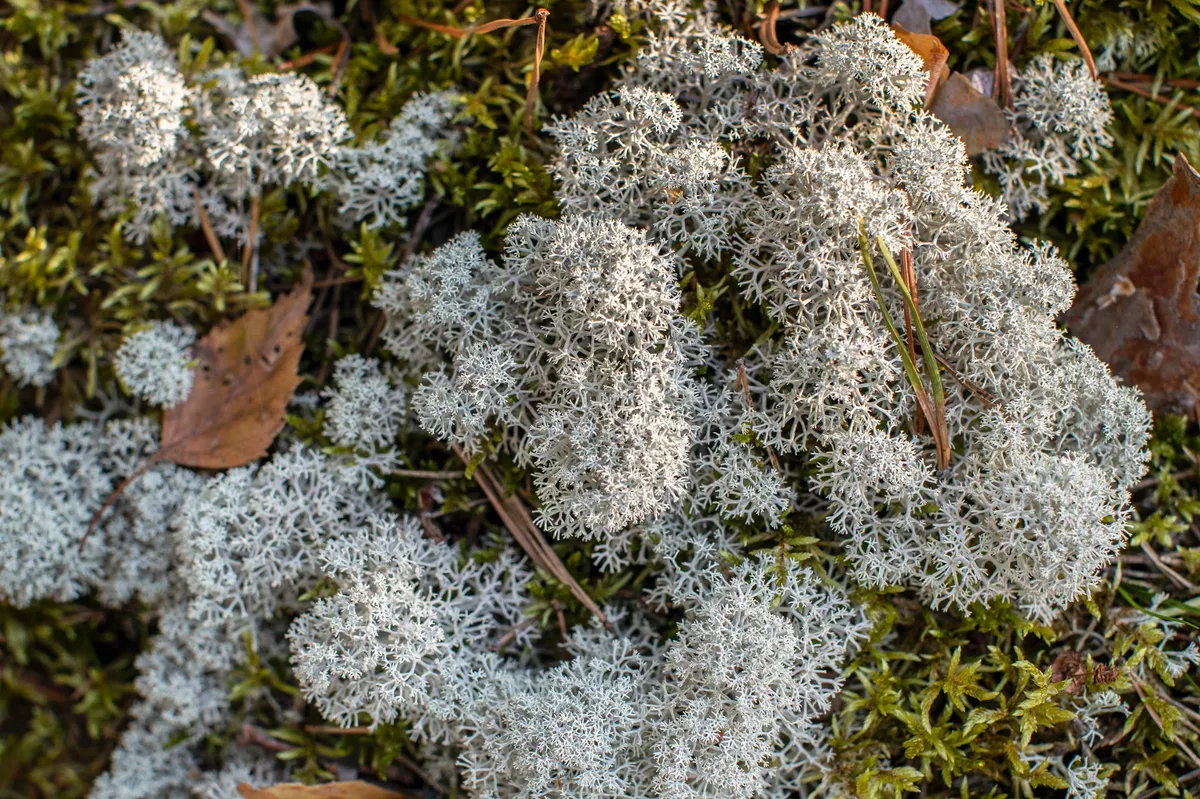
Cladonia stellaris, a slow-growing, mat-forming cup lichen, makes an appearance in Tom’s garden, although he prefers to concentrate on mosses. The dominating species of lichen in the garden is Cladonia arbuscula.

A low, cut-stone pillar on top of the rock marks the entrance to the garden, its shining, horizontal surface providing a point of reference for the eye. Walking down into the garden and stepping on the planks you feel as though you are entering a different world.